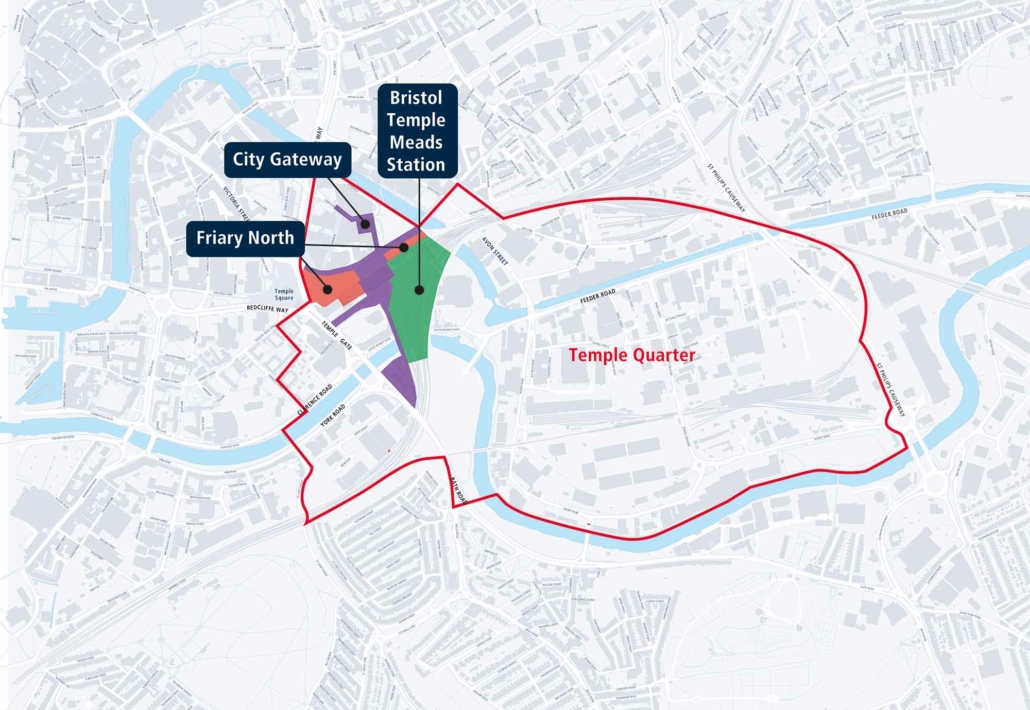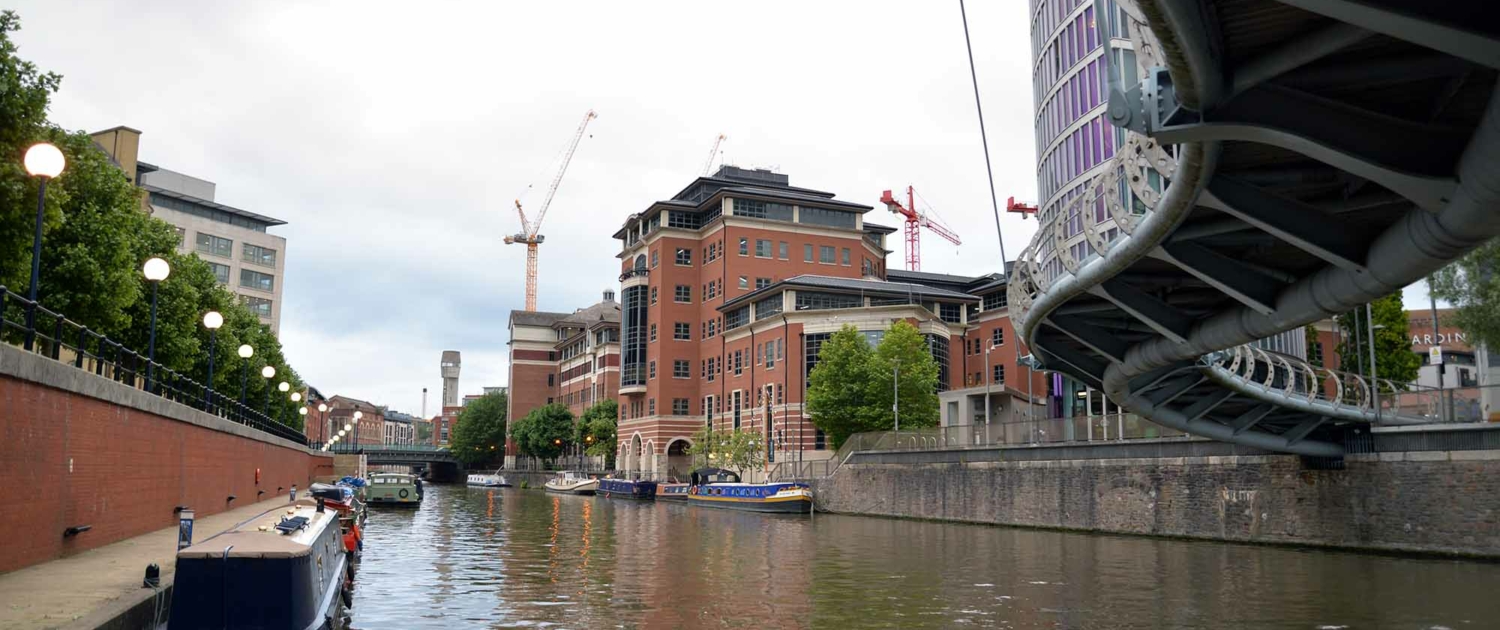A Case Study of Urban Regeneration in Bristol
What is urban regeneration?
Urban regeneration involves redeveloping and revitalising areas that have experienced urban decay or decline. The processes can include installing modern facilities in old buildings (known as renewal) or opting for redevelopment (i.e. demolishing existing buildings to create brownfield sites for new developments). The aim is to improve these areas’ physical, economic, and social conditions, making them more vibrant and attractive to residents, businesses, and visitors.
In Bristol, old industrial areas near the railway station and port had become rundown. The docks and industrial buildings became derelict as the port facility moved to Avonmouth. Much of this area has now been regenerated, including the area around the railway station known as the Temple Quarter.
Where is the Temple Quarter?
The Temple Quarter is an area located in Bristol, England. It is situated southeast of Bristol city centre, around the Temple Meads railway station. The area is named after the historic Temple Church located within its boundaries. Much of the area became an Enterprise Zone in 2012, meaning it qualified for government money to support regeneration.

A map to show the location of Bristol’s Temple Quarter
Why did the area need to be regenerated?
During the eighteenth century, the Temple Quarter grew as an industrial region. Frequent flooding plagued the area until the nineteenth century when the ‘Floating Harbour’ and the Feeder Canal were constructed. As a result, the harbour’s water level was no longer subject to tidal changes and remained constant, enabling further industrial expansion. In 1841, Brunel established the first railway station in the area. This was followed by adding more railway sidings, which occupied 40% of the Temple Quarter.
Terraced housing in the Template Quarter was demolished as part of a programme of slum clearance. The heavy industries were closing by the second half of the twentieth century. The city centre docks declined due to the new port developments at Avonmouth and Portbury, leaving behind abandoned factories, railway sidings, and many areas contaminated with industrial pollution and waste. Despite its central location and transport links, the Temple Quarter suffered significant neglect and underinvestment. Many buildings were abandoned or underused, and the area lacked residential housing and recreational spaces.
A number of factory buildings were protected as listed buildings, meaning they could not be demolished. Cobbled streets from the nineteenth century were to be retained for their heritage value.
Despite its proximity to the city centre, the area was largely disconnected, contributing to its decline. The area had high unemployment rates and was not considered an attractive place to invest, work, or live.
What were the challenges of regenerating the Temple Quarter?
- Securing funding: The scale and complexity of the project required significant financial investment.
- Balancing interests: Different stakeholders had varied interests and goals, requiring careful negotiation and compromise.
- Infrastructure challenges: The redevelopment of infrastructure, particularly around a busy railway station, was technically challenging and disruptive.
- Maintaining heritage: Protecting and preserving the area’s historical elements while allowing for modern redevelopment posed a significant challenge.
- Environmental damage: Pollution left by industrial waste and other contaminants
What are the main features of the Temple Quarter regeneration scheme?
The regeneration of the Temple Quarter was a complex, multi-stakeholder project led by the Bristol City Council in collaboration with the Homes and Communities Agency, Network Rail, and private sector investors. Key elements included:
- Enterprise Zone: An area covering 72 hectares became an Enterprise Zone in 2012. It is the UK’s largest Enterprise Zone. The Enterprise Area offered incentives for businesses to relocate, including tax relief and low rents.
- The Temple Gate Scheme: The Temple Gate scheme involved the redevelopment of the area in front of Temple Meads railway station. The railway station was redeveloped into a transport hub. It included segregated pedestrian and cycle routes, new pedestrian and cycle crossings, improved transport facilities and a new Metrobus stop and the creation of bus priority lanes.
- University of Bristol’s new campus: The establishment of a new campus focused on digital and business technologies. It includes Brunel’s Engine Shed, an Enterprise Hub led by the University of Bristol. The building is home to a range of high-tech and creative businesses. Boxworks, a collection of 20 custom-designed shipping containers as workspaces, is located next to Engine Shed.
- Green infrastructure: Emphasis was placed on creating green spaces and promoting sustainable and energy-efficient construction.
- Mixed-use development: The project included a blend of residential, commercial, and public spaces.
How successful is the Temple Quarter regeneration?
The Temple Quarter regeneration project has been hailed as a success for various reasons:
- Economic growth: The creation of the Enterprise Zone has attracted significant business investment and created new jobs. More than 4000 jobs have been created as part of the plan to create 17,000 jobs over 25 years. Almost 400 firms from the creative, digital and green industries have moved into the area.
- Improved connectivity: Transport and accessibility improvements have better integrated the area with the wider city.
- Increased vibrancy: Adding housing, recreational spaces, and cultural attractions has enhanced the area’s vibrancy and liveability.
- Sustainability: The emphasis on green and energy-efficient construction has contributed to Bristol’s reputation as a green city.
However, it’s important to note that the project is ongoing, and complete assessments of its success will likely be made in the coming years. Also, like any large-scale urban regeneration project, it has faced some criticism, particularly regarding affordability and inclusivity.
Related Topics
Use the images below to explore related GeoTopics.


